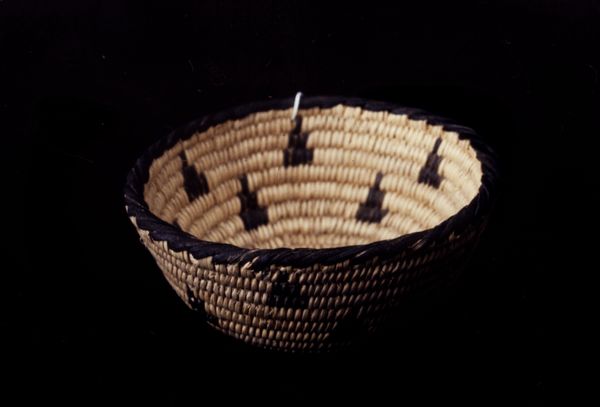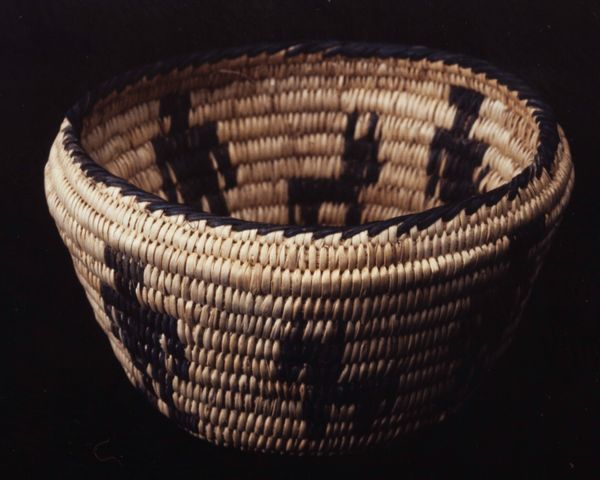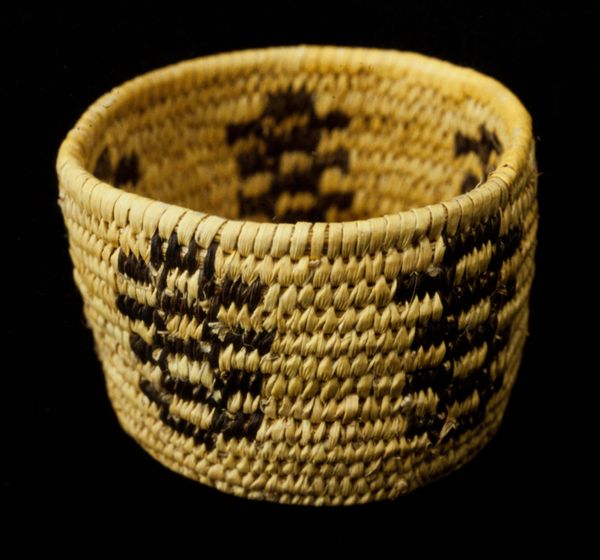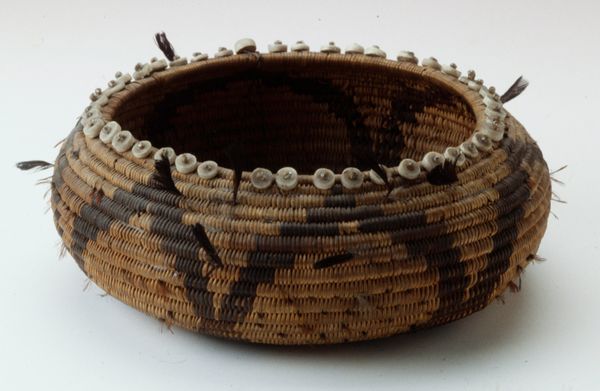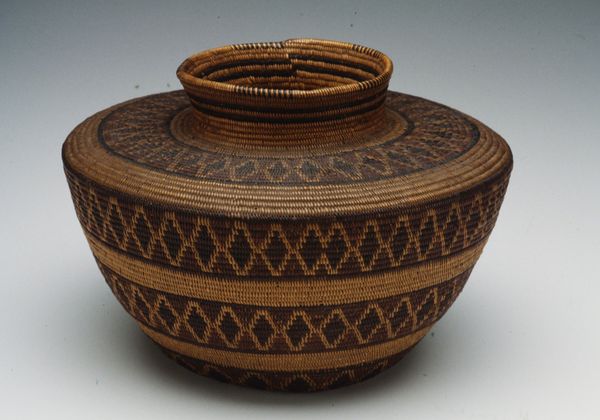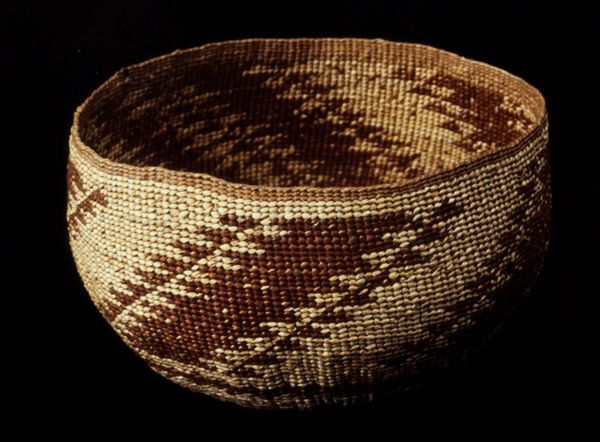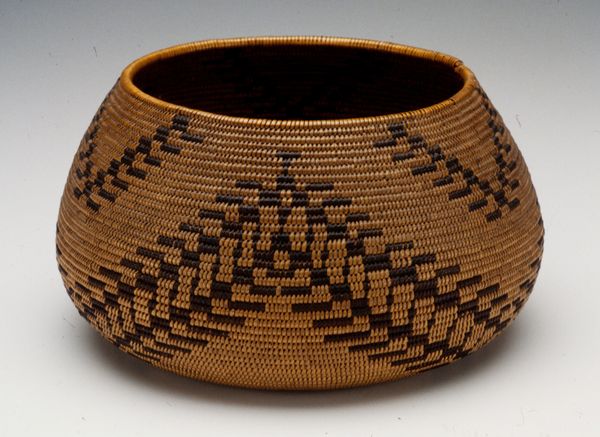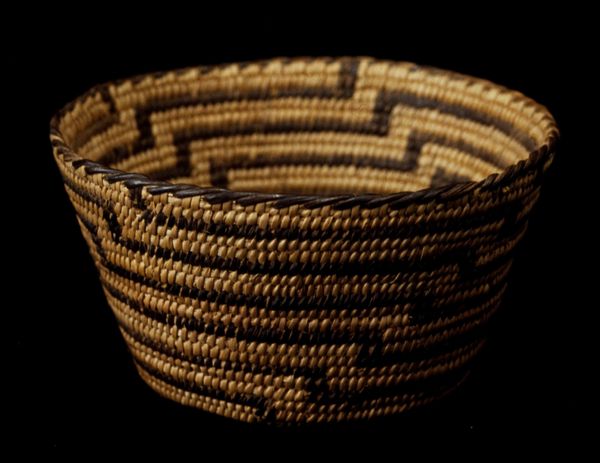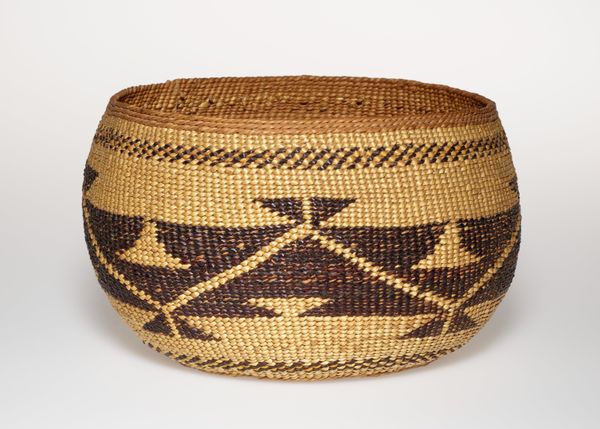
fibre-art, weaving, textile
#
fibre-art
#
sculpture
#
weaving
#
textile
#
indigenous-americas
Dimensions: 3 1/8 x 6 x 5 1/4 in. (7.94 x 15.24 x 13.34 cm)
Copyright: Public Domain
Curator: Here at the Minneapolis Institute of Art, we're looking at an early 20th-century fibre-art "Basket" by Indé, of the Apache people. Editor: Okay, my first thought? This isn’t just a container; it feels like two whispers, barely touching, braided together to hold secrets. Curator: I appreciate that you pick up on that intimate tension. Given the history of forced assimilation and cultural erasure that Indigenous communities faced during the early 20th century, the basket serves as both a functional object and a profound act of cultural resilience. It embodies a period of immense sociopolitical struggle. Editor: Exactly! The patterns—those bold, black squares dancing against the beige—aren't just decorative; they are like ancestral fingerprints pressed into each fiber. I feel a heartbeat thrumming beneath that meticulously woven surface. Curator: Those geometric patterns also signify complex cosmological understandings specific to the Apache, often reflecting concepts related to balance, movement, and the interconnectedness of all living things. Woven materials also index sustainable ecological relationships. Editor: So, it’s more than pretty geometry. It's a visual language! Makes me wonder what kind of stories or memories were bundled up inside. Did it carry corn, or perhaps secrets whispered between generations under starry desert nights? Curator: Your curiosity isn't misplaced. These baskets were essential in daily life for gathering, storage, and even ceremonial use. The skills involved in creating them, using locally sourced fibres, passed down through generations, became intrinsically tied to the social roles of Indigenous women. Editor: I keep thinking about how much labor went into making this, and how, with each loop and knot, Indé wasn't just making a basket. She was weaving identity and defiance in every single strand. You can almost hear the soft rustle of reeds whispering stories of survival, can’t you? Curator: I can certainly imagine that sound resonating across the decades. Thinking about Indigenous Futurism today, perhaps we might see this ancestral object as a portal—a reminder that survival and cultural continuity remain radical acts. Editor: It’s a profound idea. In the end, this is more than art, isn’t it? It’s proof that something beautiful and resilient can emerge even from times of constraint and cultural hardship.
Comments
No comments
Be the first to comment and join the conversation on the ultimate creative platform.
